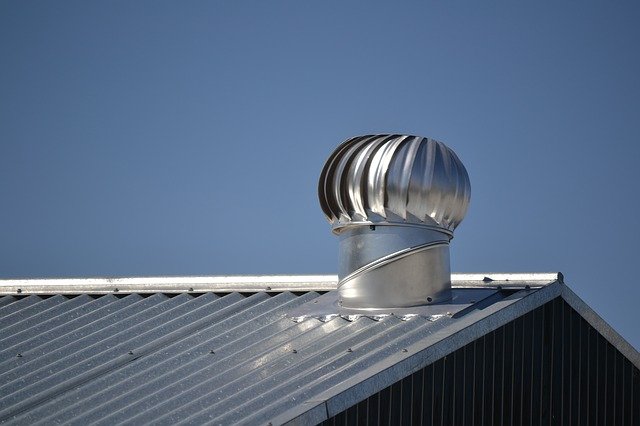Last Updated on: 8th October 2021, 10:06 pm
Roof ventilation is one of the most misunderstood components of the roofing industry. Unfortunately, we respond to roof leaks all the time that are a result of improper ventilation, and the company that installed the new roof system did not even consider it.
Worse yet, many companies install brand new roofing products which will only last a portion of the time it should after their clients pay good money. This is obviously a sore spot for the roofing companies.
Proper roof ventilation
Improper roof ventilation will cause your roof to not perform correctly and will cause ice damming, sheathing rot, mold, condensation, leaks, and will cause your roof membrane or roof shingles to deteriorate prematurely.
The ratio of roof vent exhausts on a sloped roof is about 250:1. In other words, you need about 1 sq. ft. of roof vent (or exhaust from your roof) for every 250 square feet of roof deck. This should be equal to the roof system intake, which is typically located under your roof soffits.
The main types of vents for your roof and attic
Standard Roof Vents or Roof Louvers
This is a common type of vent (e.g. Lomanco Standard Static Roof Vent) –
typically you see this type of roof vents everyday on sloped roofs (if you have ever stopped to notice, we know roof venting is a boring topic). This vent type is available in a variety of styles and colours.
Whirlybirds or Turbine Roof Vents
Whirlybird vents, turbo vents, or roof turbine vents – wind turbines as they are called generically, are the ones you see on sloped roofs that turn in the wind. In this case, the wind power is naturally used to power the vents rotation and the air intake and exhaust, saving the energy costs.
Powered Roof Vents and Solar-power Vents
Powered roof vents need to be hooked up by an electrician (as they use power), and solar-powered ones are obviously powered by the sun.
A caution to solar buyers – be sure to use a reputable solar vent supplier and an installer of the roof vent that know what they are doing.
One of the suppliers we recommend is Lomanco.
The Omni Solar Roof Vent by them is of excellent quality and the vent itself performs as advertised and performs very well.
Ridge Line Vents and Roof Ridge Vents
Ridge venting is one method of roof venting we recommend often. The ridge exhaust vent allows constant, even predictable roof or attic ventilation. In areas in the north, the ridge vent can save your home from leaking due to attic condensation when snow loads will cover over the exhaust of traditional ventilation systems.
Ridge Vent on Shingle Roof
Ridge venting is more costly as the sheathing at the ridge of your roof needs to be cut on both sides for the system to be installed. However, it is well worth the cost. Lomanco, Duraflo, and GAF are the suggested providers for this system.
Gable Vents or Attic End Vents
Self-explanatory. This system is found on the end of your home at the gable siding.
Intake Vents or Soffit Vents
The intake portion of your attic venting is typically in through the soffits. There are a number of soffit style vents.
Stay tuned for our blog article on calculating air flow.
